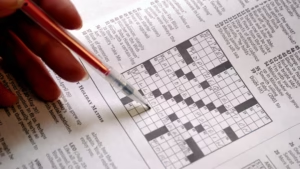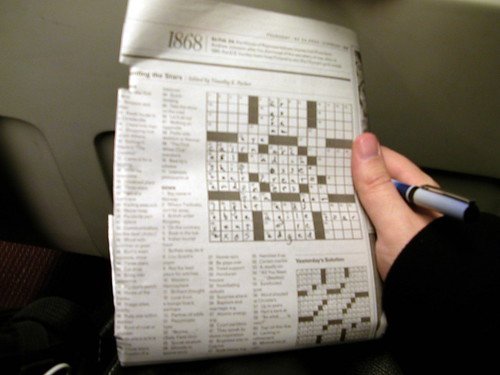Introduction to the Washington Post Crossword
The Washington Post Crossword puzzle has established itself as a beloved staple among puzzle enthusiasts for decades. Its origins trace back to the early 20th century, with the first crossword appearing in the Washington Post in 1943, shortly after the crossword craze began sweeping the nation. Over the years, the Washington Post has played a pivotal role in popularizing this engaging pastime, attracting a dedicated following of both casual and serious solvers.
One of the distinguishing features of the Washington Post Crossword is its commitment to quality and creativity, often showcasing the work of renowned constructors. These creators infuse the puzzles with diverse themes, clever wordplay, and relevant cultural references, which resonate with a broad audience. The crossword’s daily publication ensures that fans have fresh challenges and new opportunities to exercise their mental faculties, contributing to its lasting popularity.
Culturally, the crossword has evolved from a simple pastime to a collective experience that sparks conversations among friends, family, and colleagues. Solving the Washington Post Crossword has become a shared ritual for many, often seen as a way to unwind and socialize while stimulating the brain. The unique blend of challenging clues and informative content not only entertains but also educates solvers about a variety of topics, demonstrating the puzzle’s dual role as a form of amusement and learning.
The Washington Post Crossword has also adapted to advancements in technology, making it accessible on various platforms such as mobile apps and online interfaces. This shift has expanded its reach, allowing new generations to engage with the puzzle and further solidifying its place in American culture. By continually evolving and embracing both tradition and innovation, the Washington Post Crossword remains one of the most cherished and engaging puzzles available today.
How to Solve the Washington Post Crossword
Solving the Washington Post Crossword can be both a challenging and rewarding experience. To start, one must familiarize oneself with the various types of clues typically encountered in crosswords. These clues often include straightforward definitions and wordplay elements such as puns or homophones. Developing a keen understanding of this clue structure is essential for any crossword aficionado.
Another critical aspect of solving the Washington Post Crossword involves mastering common crossword lingo. Frequent abbreviations like “avg.” for “average” or “G. I.” for “Government Issue” often appear, making it vital for solvers to recognize these shorthand terms. With practice, you will start to identify patterns and recurrent phrases, which can significantly ease your solving process.
As you tackle each puzzle, consider using a few strategic techniques. For example, starting with the easiest answers or filling in well-known names and places can help build momentum. Additionally, working with the fill-in-the-blank clues can often lead to discovering other intersecting answers, making the overall task more manageable. If you encounter a particularly challenging clue, it can be beneficial to move forward and return to it later, allowing the answers to other clues to provide hints.
Resources such as dictionaries or online crossword forums can also enhance your solving experience. These tools can be particularly helpful for less common words or tricky definitions, and many online platforms foster communities where solvers share tips and tricks for completing puzzles like the Washington Post Crossword. Moreover, cultivating a routine can elevate your puzzle-solving enjoyment; setting aside a specific time daily to engage with the crossword can turn this enjoyable pastime into a welcomed habit.

The Community of Washington Post Crossword Enthusiasts
The world of the Washington Post Crossword extends far beyond the pages of the newspaper. It encompasses a vibrant community of enthusiasts who share a passion for puzzle-solving and engage in lively discussions about their experiences. This collective enhances the enjoyment of the crossword by fostering connections among solvers, allowing them to share strategies, insights, and solutions.
Online forums and social media groups dedicated to the Washington Post Crossword have emerged as valuable resources for both novice and experienced solvers. These platforms offer spaces where individuals can exchange tips, discuss challenging clues, and celebrate their successes. Enthusiasts often form bonds over their shared love for the puzzle, cultivating friendships centered around this intellectual pastime. Social media platforms like Twitter and Facebook serve as vital hubs for these interactions, where fans can post screenshots of particularly difficult puzzles or ask for help with specific clues.
Additionally, fan websites have become instrumental in organizing events and tournaments that cater to crossword enthusiasts. These gatherings provide an opportunity for solvers to come together, compete, and engage with fellow crossword fans in an exciting environment. For example, tournaments often feature timed challenges, allowing participants to test their skills against one another while building camaraderie within the community. These events not only promote a spirit of healthy competition but also serve as a means of connecting individuals who share a common interest in the esteemed Washington Post Crossword.
The value of community engagement cannot be overstated, as it significantly enhances the overall puzzle-solving experience. By participating in discussions, attending events, or simply following along in online forums, enthusiasts enrich their appreciation for the Washington Post Crossword. This interconnectedness ensures that the joy of solving crosswords continues to thrive, fostering a dynamic community that celebrates its shared passion.
The Future of the Washington Post Crossword
As the landscape of digital media continues to evolve, the Washington Post Crossword is poised for exciting transformations that may enhance the way enthusiasts engage with this beloved puzzle. With an increasing number of readers turning to digital platforms for their content consumption, the Washington Post is likely to expand its online offerings, providing solvers with more access to the crossword beyond traditional print formats. This shift not only reflects changing habits but also opens up possibilities for interactive features that can elevate the overall crossword experience.
One emerging trend is the integration of technology into puzzle creation and solving. Tools that harness artificial intelligence and algorithms could revolutionize the way crosswords are designed, making them more adaptable to varying levels of difficulty and user preferences. Additionally, the advent of interactive crosswords, which allow solvers to click through clues and reveal answers instantly, may attract a new generation of puzzle enthusiasts who favor instant gratification. The Washington Post Crossword could pave the way for such innovations, potentially implementing dynamic content updates that accompany major events or themes occurring in the news.
Moreover, as crosswords continue to hold a central place in modern culture, their formats may evolve to include collaborations with other media, such as podcasts or videos, where discussions about clues and solving strategies can take place in real-time. This multimedia approach could engage a broader audience and offer new perspectives on traditional puzzle-solving methods. Furthermore, as more people engage with mobile applications, the ease of solving crosswords on the go may encourage increased participation in this cherished pastime.
In conclusion, the future of the Washington Post Crossword holds great promise as it adapts to technological advancements and meets the needs of contemporary audiences. By embracing digital innovation while maintaining the essence of the crossword, this iconic puzzle can continue to captivate solvers for years to come.





